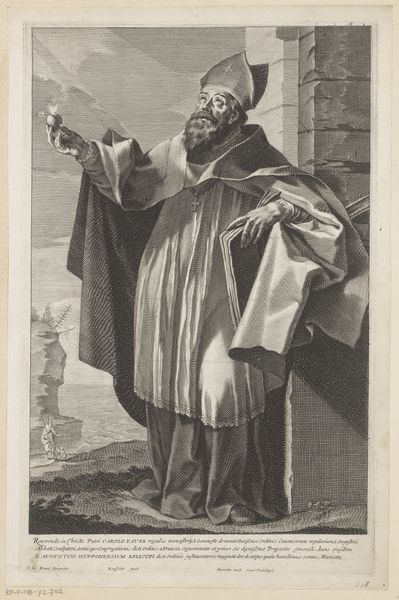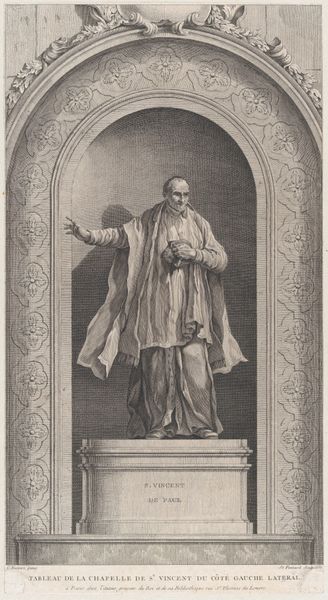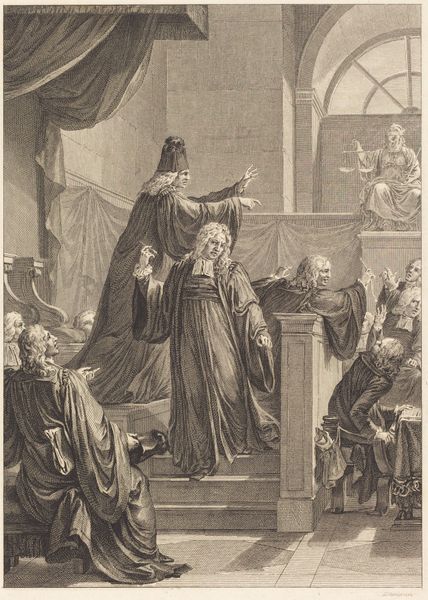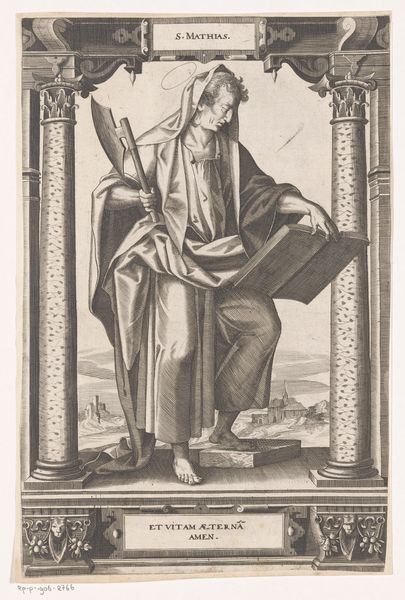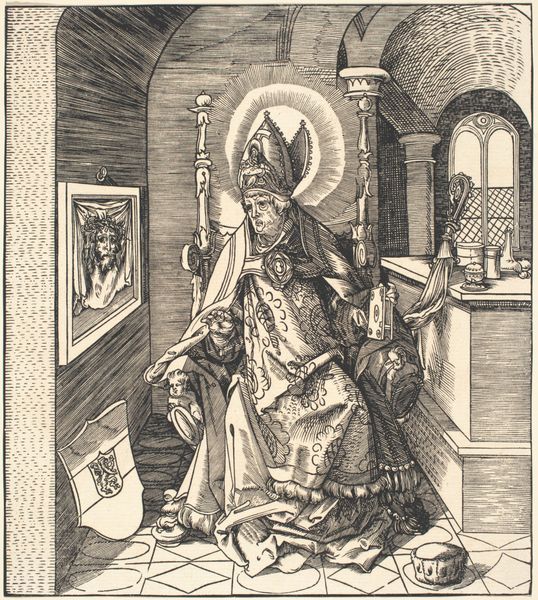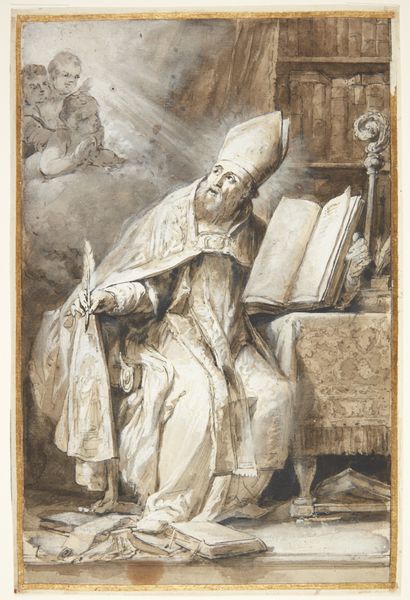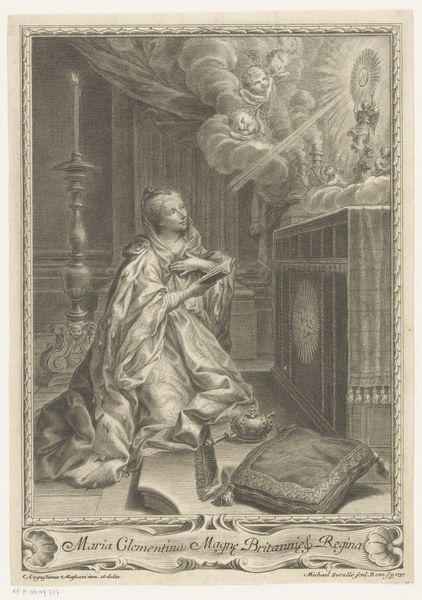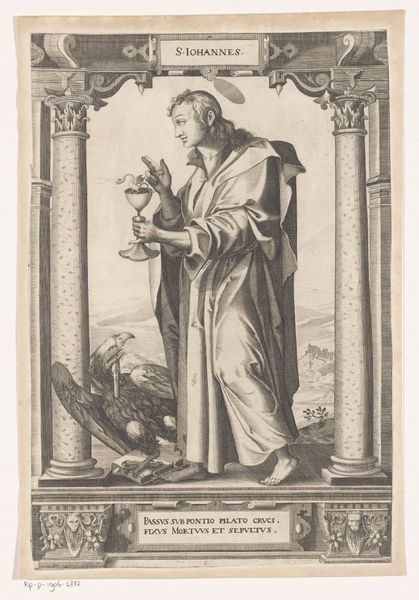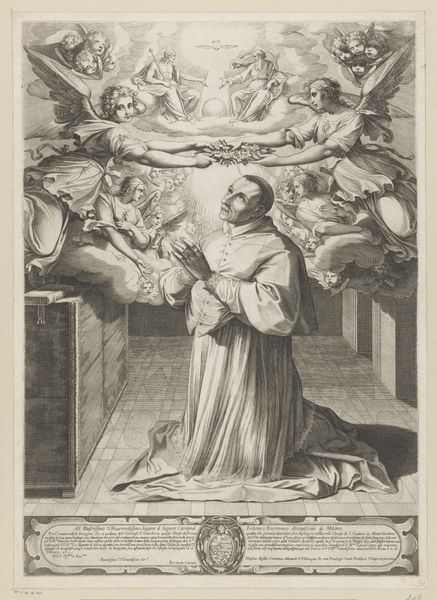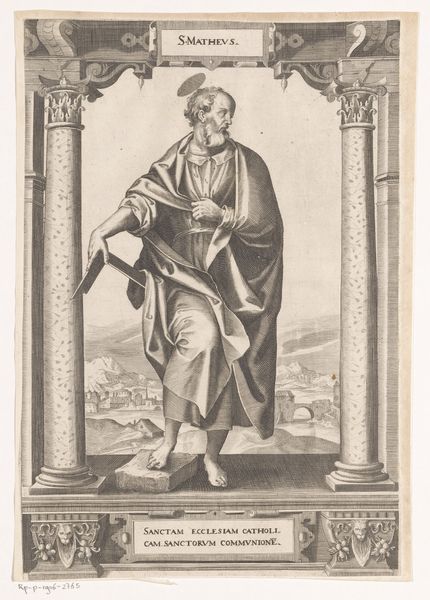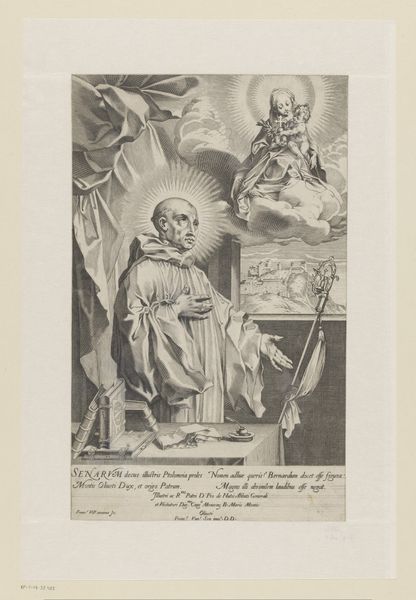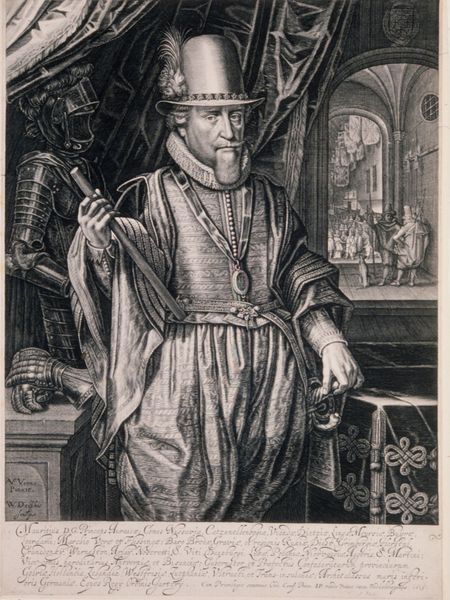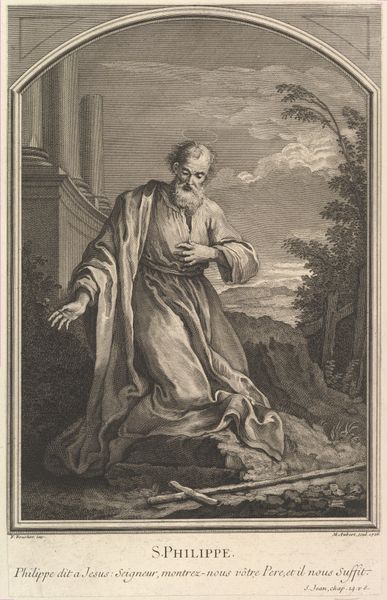
Heilige Augustinus verlicht door Veritas, in zijn hand een brandend hart 1636 - 1696
0:00
0:00
pen, engraving
#
portrait
#
allegory
#
baroque
#
charcoal drawing
#
line
#
pen
#
history-painting
#
academic-art
#
engraving
Dimensions: height 454 mm, width 345 mm
Copyright: Rijks Museum: Open Domain
Editor: Here we have Nicolas de Poilly's "Heilige Augustinus verlicht door Veritas, in zijn hand een brandend hart," an engraving from between 1636 and 1696. It strikes me as incredibly detailed, yet almost ethereal with its emphasis on light. How do you interpret this work? Curator: I see this as a powerful statement about the intersection of faith, knowledge, and power within a specific historical and social context. The figure of Saint Augustine, bathed in the light of Veritas – truth – speaks to the dominant religious narratives, while his gesture with the burning heart evokes a potent symbol of divine love and spiritual devotion that requires deeper deconstruction. Editor: Deconstruction? In what way? Curator: We must critically examine how representations of sanctity, like this one, are strategically constructed and consumed. Consider how gender, class, and religious doctrine intertwine here. Who gets to define 'truth,' and how does this artwork contribute to the power structures of its time? Editor: So, it’s less about the purely devotional aspect and more about the social forces at play? Curator: It's both. It’s vital to acknowledge the spiritual intent, but also to question the ideological underpinnings of that spirituality. How does the portrayal of Augustine reinforce or challenge existing norms related to gender roles, social hierarchies, and religious authority within the framework of 17th-century society? Editor: That makes me consider the role of art and power and also whether the themes still apply now, even though the style might seem historical. Thanks, I have plenty to think about! Curator: Indeed. By situating this work within the broader discourse of cultural studies, we can unpack its multifaceted meanings and spark crucial conversations about its relevance to contemporary audiences.
Comments
No comments
Be the first to comment and join the conversation on the ultimate creative platform.
